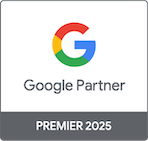Industry estimates place the annual ad fraud loss at $80–$90 billion, with predictions reaching as high as $172 billion by 2028 unless the issue is addressed.
Long-term strategy for avoiding low-quality ad site placements
Abisola Tanzako | Oct 29, 2025

Table of Contents
- Why ads end up on low-quality sites (and how to stop it)
- How low-quality ad site placements damage ROI and brand trust
- 5 Steps to build a long-term strategy against low-quality ad site placements
- Curate and control inventory
- Activate brand safety and contextual solutions
- Maintain clean, reliable data
- Work with certified ad tech providers
- Measure holistically: Beyond clicks
- How ClickPatrol protects you from low-quality ad site placements
- Common signs of low-quality and site placements to watch for
- Best practices for continuous placement monitoring
- Safeguard your marketing strategy: Eliminate low-quality ad site placements for good
Low-quality ad site placements silently drain billions from marketing budgets every year.
From clickbait sites to fake domains, these placements damage trust, distort performance data, and waste ad spend.
According to Statista, global ad fraud losses are expected to rise from $84 billion in 2023 to $172 billion by 2028.
When your ads appear on clickbait sites, misinformation pages, or even malware-infected domains, the impact extends beyond a wasted budget; it also damages brand trust.
This article shows how ClickPatrol helps advertisers stop these losses for good.
Why ads end up on low-quality sites (and how to stop it)
Websites or apps with low-quality ad site content, fake engagement, or irrelevant traffic are considered low-quality placements.
Among them are “made-for-advertising” (MFA) websites, which are pages designed solely to generate revenue from ads and offer little to no value to users.
Common reasons include:
- Programmatic complexity: Low-cost impressions are prioritised by real-time bidding, frequently at the expense of quality for scale.
- Opaque supply chains: Fraudsters can intercept spending because long supply chains conceal the presence of intermediaries, making it difficult to track transactions.
- Misleading classification: To draw in ads, some websites imitate premium domains (such as fake “Forbes” clones).
- Traffic from automated bots: These clicks and views appear human, but they result in no conversions.
Forbes found that only 50% of ad spend reaches publishers, with the remaining 50% going to intermediaries or scam networks.
Moreover, programmatic advertising already accounts for the majority of display ad spend, $595 billion in 2024 and projected to reach $800 billion by 2028, resulting in higher exposure to low-quality sites than ever before.
Even domestic brands are not immune. Forbes’ coverage of MFA incidents revealed that major advertisers, including McDonald’s, had unintentionally run ads on counterfeit websites.
Aside from the monetary loss, the damage to reputation is massive. 79% of consumers say they lose trust in brands that appear alongside offensive or misleading content.
How low-quality ad site placements damage ROI and brand trust
Low-quality ad site placements affect all marketing KPIs, not just ROI.
These risks increase as digital ad spending is projected to reach $826 billion by 2025.
Over time, even a tiny portion of invalid traffic can result in millions of dollars in losses.
Wasted spend:
According to Forbes, fraud accounted for 22% of all digital ad spending in 2023.
Low viewability:
On questionable websites, the average falls to 20%, compared with 31% on average.
False performance data:
Bot clicks skew attribution models and inflate CTRs, rendering campaign optimisation untrustworthy.
Brand damage:
The 2016 Google ad boycott, triggered by ads displayed alongside extremist content, serves as a poignant reminder.
Consumer mistrust:
According to a Statista study, 79% of consumers stop buying from brands they see in dangerous settings.
5 Steps to build a long-term strategy against low-quality ad site placements
A sustainable strategy for combat placements requires monitoring, meticulous data hygiene, and intelligent automation.
Below are the key steps to long-term success.
Curate and control inventory
- Whitelist trusted publishers and blacklist known culprits.
- Utilize supply path optimization (SPO) to cut out intermediaries whenever feasible.
- Monitor performance by domain: Consistently high CTRs or low bounce rates typically indicate inadequate inventory.
Activate brand safety and contextual solutions
- Use contextual targeting instead of relying on cookies, especially as third-party cookies become less prevalent.
- Leverage machine learning solutions that track page context and sentiment to prevent mismatched placements.
Maintain clean, reliable data
- Use first-party data to target audiences.
- Constantly monitor for high traffic anomalies, e.g., low engagement or overselling from a single block of IP addresses, and alert teams to recognize warning signs.
Work with certified ad tech providers
- Choose MRC (Media Rating Council) and TAG (Trustworthy Accountability Group) certified partners.
- According to Forbes, only 12% of impressions consistently meet quality standards without certified evidence.
- Verify partners’ fraud-detection processes and insist on open reporting.
Measure holistically: Beyond clicks
- Ditch surface-level metrics like CTR.
- Measuring engagement depth, time on site, and post-click activity.
- Spend conversion tracking that filters out invalid traffic signals to ensure KPI accuracy and cleanliness.
How ClickPatrol protects you from low-quality ad site placements
ClickPatrol is a real-time defense for display and PPC marketers.
Its AI-driven intelligence filters out low-performing, irrelevant placements, ensuring your ads appear only on high-performing, trusted sites.
How ClickPatrol works:
- AI-powered placement analysis: scans millions of sites daily to detect MFA pages, bots, and spam content.
- Automatic exclusions: removes low-performing placements from campaigns across Google Ads, Microsoft Ads, and major DSPs.
- Custom quality thresholds: Advertisers set thresholds for metrics such as viewability and domain trust.
- Threat alerts: receive daily notices of emerging threats, such as bot intrusion affecting up to 24% of affiliate traffic.
- Budget reclamation: clients reclaim an average of 20–30% of wasted ad spend.
Common signs of low-quality and site placements to watch for
Catching poor placements early can save thousands in wasted ad spend. Watch for these red flags:
- Unusually low viewability: anything below 20% often signals hidden ads or bot traffic.
- Traffic spikes from unusual locations: sudden visits from non-target countries may indicate the presence of fraud farms.
- High bounce rates (90%+): This indicates that the audience is not relevant or engaged.
- Very cheap CPMs: inventory under $1 is often tied to bot-driven fraud.
- Duplicate domains: MFA clones mimic trusted sites and steal premium budgets.
Best practices for continuous placement monitoring
Ongoing monitoring is key to long-term protection against low-quality placements.
Use these proven steps to maintain campaign integrity, reduce fraud risk, and boost ROI:
- Weekly placement audits: review viewability scores, bounce rates, and traffic sources to catch 80% of threats early.
- Monthly whitelist and blacklist updates: keep your budget focused on premium inventory by refining trusted domains and blocking bad actors.
- Quarterly fraud signal training: Teach your team to spot red flags, such as traffic spikes or duplicate domains.
- Bi-annual competitor checks: benchmark placement quality to uncover gaps and stay ahead of new fraud tactics.
- Timely tool updates: apply patches and upgrades to stay in sync with the latest fraud detection technology.
Pair these steps with ClickPatrol’s automation to eliminate guesswork and free up time for strategy.
Safeguard your marketing strategy: Eliminate low-quality ad site placements for good
Low-quality ad site placements are not just an operational problem; they create a strategic gap in your marketing system.
To eliminate them, advertisers must go beyond simple blocklists or one-time audits.
A solid long-term strategy includes setting quality standards, grading placements, securing clean supply chains, and automating exclusions.
ClickPatrol makes this easy by automatically identifying and excluding low-quality placements, while providing you with full transparency and control.
By focusing your ads on trusted sites, you protect your brand, boost ROI, and future-proof your campaigns in an increasingly complex digital space.
Start optimizing your placements today with ClickPatrol. Every wasted impression is a missed conversion.
Frequently Asked Questions
-
How much is wasted on fraud every year in ad spend?
-
Would blocking too many domains lower campaign reach?
Yes, overly aggressive blocking will limit reach and push ads into other, lower-quality corners.
The solution involves a nuanced approach, including scoring, whitelisting, and private deals, rather than wholesale exclusions.
-
Is programmatic advertising, by nature, unsafe?
No. The danger is in dark supply chains and weak controls.
By insisting on transparency, adopting verification technologies, and maintaining direct publisher relationships, advertisers can safely use programmatic scale.
-
How does ClickPatrol connect to my platforms?
Smooth integrations with Google Ads, Bing, and leading DSPs can be set up via the API in under 30 minutes.






